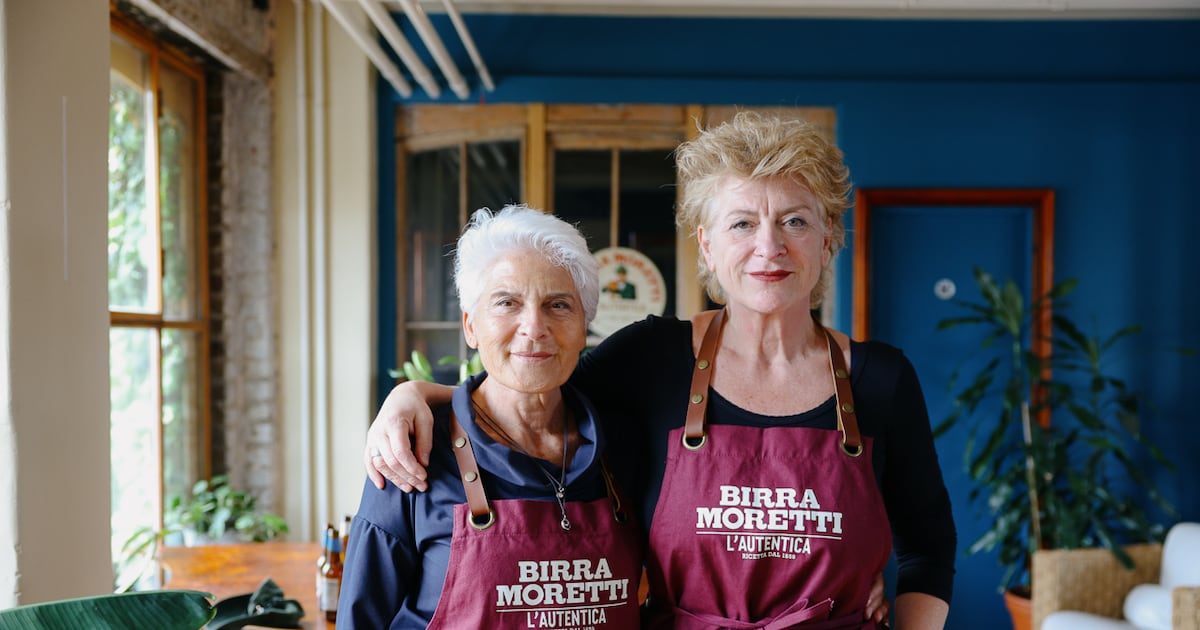“No, no, no!” exclaims an affronted Monica Venturi at the idea that anybody might attempt to pass off spaghetti bolognese as an authentically Italian dish.
Her face is stricken at the thought of adding ragù (meat sauce) to spaghetti and then misnaming it, when, as everybody in her hometown of Bologna knows instinctively, “spaghetti alla bolognese does not exist”.
Monica, as a decades-long veteran pasta-maker along with her sister Daniela Venturi, does not invite argument on her specialist subject.
In fact, the sisters explain, the real spaghetti alla bolognese is made with tuna, tomato and onion, topped off with fresh parsley. And although tuna is a fish, and Italians generally shy away from cheese on seafood, they like to add parmesan. This is because, says Monica, “for Bolognesi people, tuna is not a fish”.
The pasta-making duo are in Dublin as part of a partnership with Birra Moretti which will see them host a two-night pop-up Nonna’s Kitchen at the end of July. At home in Bologna, they run a classic pasta shop, Le Sfogline, where they handmake as much as 60kg of fresh pasta on their busiest week. In the pasta business for almost 30 years and both having nonna (grandmother) status, the sisters know everything about how it should be cooked, eaten and enjoyed.
For the record, the authentic version of the food Irish people like to call spaghetti bolognese is tagliatelle al ragù, ribbon-shaped pasta with slow-cooked meat sauce. The sisters warn that even if you know this, it’s dangerously easy to fall down with the ingredients by using too much of the base mix of celery, carrots and onions.
“You must be aware of this because if you put in too much, it becomes very heavy. And you only taste the three vegetables. This is a mistake I’ve noticed,” says Monica.
Warming to the theme of non-expert pasta gaffes, Monica says the other area where we often tip ourselves into absolute failure is overcooking pasta.
Obeying the “al dente” (literally, to the tooth) rule, where pasta is cooked just to the point of firmness before veering into sogginess, is crucial, the sisters agree. This is especially true for their fresh pasta with eggs, says Daniela. “It cooks very fast.”
And then we get to lasagne, or lasagna – the lasagna is a single layer of sheet pasta, while lasagne is the plural. There is disapproval on the sisters’ faces when they acknowledge that people in France sometimes eat the dish with a mixed salad, but sheer disbelief when they’re told it is generally served with chips in Ireland. News of garlic bread often being heaped on the side as well prompts such uncomfortable laughter that it seems wise to avoid talk of coleslaw.
Daily lasagne-maker Daniela, who says she still can’t resist sampling her wares after all these years, isn’t giving up on us though. She has a key tip on how to handle béchamel, the white sauce used between lasagna layers.
“You don’t see béchamel when lasagne is ready to eat,” she says, with Monica adding that the sauce is there “for keeping lasagne just a little bit softer”. In other words, a little white sauce goes a long way.
The bread and butter of their business though is tortellini, the small ring-shaped pasta filled with meat that was historically served by Bolognesi at Christmas but is now sold and eaten all year round. The main rule here is to avoid smothering the golden circles of deliciousness in heavy sauces. In fact, you should probably avoid the sauce altogether, and serve it simply “in brodo”, or broth.
This makes sense when you hear of the richness that goes into making the sisters’ top-end tortellini: “Pork loin cooked in butter, mortadella, Parma ham, Parmigiano 36 months old, eggs – it’s that rich that you cannot hide with a sauce,” says Monica.
However, she does admit to occasionally succumbing to a light sauce involving some grated parmesan, two or three spoons of the traditional broth that accompanies the tortellini and fresh cream, but says “just a little” is plenty. “Personally, I don’t like to cover something with sauce even if it’s good.”
She also likes to mop up sauces with bread, believing politeness has no place in such matters.
Despite being Bologna’s queens of home-made pasta, the Venturi sisters do not scoff at dried pasta, especially with fish, which they say does not combine well with the eggs in fresh pasta. Unsurprisingly though, not every dried pasta passes muster. Both recommend Pasta di Gragnano, which is made by mixing durum wheat grown at the Monti Lattari in southern Italy with the local waters. Where this isn’t available, a good rule of thumb, according to Monica, is to go with dried pasta with longer cooking times.
In general, she says she is fairly “straight” when it comes to Italian recipes, believing there’s no reason to mess around with them when they are already proven. She shudders at “terrible” innovations such as adding pineapple to pizza, while Daniela is ashen at the idea of “pizza with chips”.
So, after all these years of making pasta for the people of their native city, do the sisters still eat it every day?
“Oh, yeah,” they reply instantly, with the small qualification that they limit portion sizes to about 200g and avoid “a huge amount” of sauce. They like to try other foods when travelling however, singling out Ireland’s “wonderful meat” for praise but expressing dismay at paying €4 or more for a coffee in Dublin, when a good cup can still be found for … wait for it … €1.30 in Bologna.
Birra Moretti’s Nonna’s Kitchen will take place at Fumbally Stables, Dublin 8, on July 23rd and 24th. Tickets at €30 will be sold on Eventbrite from July 3rd
